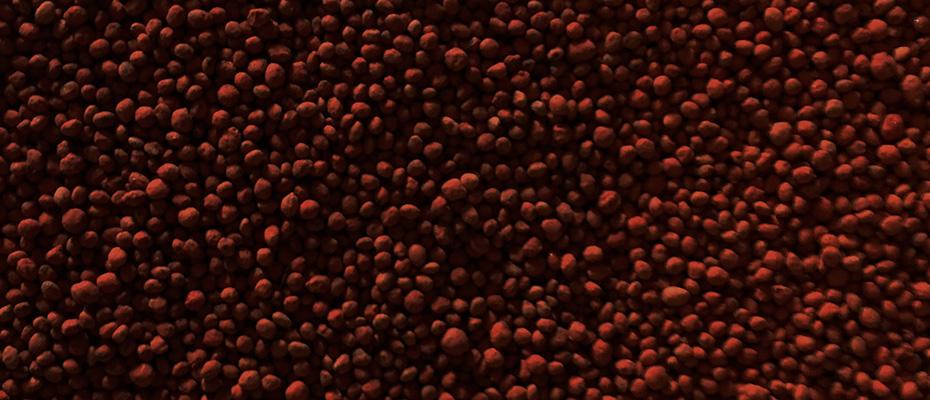Solving the Soil Health Puzzle? We Have you Covered. Cover crops are an important piece to soil health and future profit. We know it takes work and is puzzling at times. Soil First® provides quality products plus tips, tools and solutions to help cover crops work for you. As challenges arise, we are ready with the pieces you need to succeed.

There’s finally an all-purpose, easy-to-use, economical inoculant for cover crop legumes. LINK® is a simple and effective cover crop inoculant designed to maximize the benefit of your cover crop legumes, and improve your soil health.
WHY INOCULATE?
Importance of Inoculating Legumes
Rhizobia bacteria inoculants are crucial to allowing a legume to properly fix large amounts of nitrogen. Legume cover crops increase nitrogen in the soil, which in turn benefits the following corn or grass crop.
Without the correct rhizobia present, your cover crop legume will not maximize nitrogen production and maximum benefit for corn the following year will not be achieved. If the proper background population does not exist in the soil, inoculation will help you achieve greater profitability and ROI.
LINK® Makes It Easy
While inoculating legume cover crops is crucial, cost and convenience are a challenge as multiple products are often needed. LINK® is the solution to these challenges. LINK® is included with Soil First® cover crop legume mix orders of 500 pounds or more and can also be purchased as a standalone product.
SPECIFICATIONS:
Treatment Sizes & Packaging Specifications:
- Unit Treatment Size: 500 lbs. (29.5 kg)
- Case Treatment Size: 2,000 lbs.
- 60 ounces per package; 4 packages/case; 54 cases/pallet
Legumes Treated:
- Beans: Adzuki, Faba, Jackbean, Mung, Tepary, Velvet, Winged
- Clovers: Alsike, Alyce, Ball, Berseen, Bigflower, Carolina, Cluster, Crimson, Hop, Hungarian, Ladina Red, Large hop, Persian, Puff, Rabbitfoot, Red, Seaside, Slender bushclover, Small hop, White, Zig-zag
- Peas: Black eyed, Clay, Cowpea, Field, Flat, Garden, Iron, Partridge, Pigeon, Pink eyed purple hull, Rough, Specter, Sweet, Tangier, Trapper
- Vetches: Common, Hairy, Joint, Manantha, Narrow leaf, Purple
- Misc: Acadia, Centrosema, Crotolaria, Desmodium, False blue indigo, Hairy indigo, Kangaroo thorn, Korean, lespedeza, Kudzo, Lentil, Lespedeza, Sericea lespedeza, Siratro, Striped crotolaria, Sunn crotolaria, Sunn hemp, Wild indigo, Winged crotolaria
APPLICATION:
Slurry Application Method:
- Dampen the seed with non-chlorinated, clean, cool water at a rate of 17 fl. oz. (500 ml) of water per 100 lbs. (45.4 kg) of seed
- Add appropriate amount of inoculant, 12.0 oz. (340 g) per 100 lbs. (45.7 kg) of seed, then mix water, seed, and inoculant thoroughly until the seed is uniformly coated
- This method should be done in a container outside the planter box
- Allow 1-3 minutes for mixture to dry and then plant as soon as possible
Dry Application Method:
- This product can also be applied directly onto the seed. Mix seed and inoculant thoroughly until seed is uniformly coated. Layering seed and inoculant will aid in this process.
- Applying the inoculant dry is also recommended for seed that is pre-treated with fungicide. However, maximum seed adhesion will not be obtained by applying this product dry.
FAQ'S:
- How is LINK® applied?
LINK® is applied directly to seed in the seed box. Layer the product evenly across the seed. Although not required, mixing helps the inoculant adhere to a higher percentage of seed. Without direct mixing, LINK will filter through the seed box during planting, allowing it to adhere to the seed. Application is flexible; depending on what type of planting method is used, there is always a way to introduce LINK inoculant to the seed. - How important is it to apply exactly the right rate? Can the rate be altered slightly to cover any discrepancies with packaging amounts?
Exact rate is not crucial. Since LINK® has hundreds of millions of rhizobia per gram, the rate can be stretched up to 20% to cover higher amounts of seed if the rate does not match up perfectly with the amount of seed being planted. - Why isn’t LINK® applied on the seed before bagging?
Rhizobia do not survive on the seed long enough to provide a benefit if applied ahead of time. For optimal nitrogen fixation, it is best to apply the inoculant at planting time. - How long will LINK® stay viable once applied to seed?
24 hours. - Why is LINK® applied on all seed, not just the legumes?
Inoculants interact directly with the root system of the plant, so they are most effective when placed directly in the soil. By using the ‘other’ seed in the mix as a carrier, to deliver more inoculant into the soil, the legume roots can interact with higher levels of rhizobia, enhancing nodulation. - Is LINK® a GMO product?
No. There are no GMO components to LINK®. - Will LINK® cause any ill-effects when mixing with coated seed?
There will not be any difference when using LINK on either raw or coated seed. LINK® will work equally as well with both seed types. - Does use of LINK® affect how quickly seed flows within the seed box?
LINK® is applied at a very low rate; this amount of product should not cause any differences in seed flow through planting equipment.

- Easy to Apply: LINK® is a dry, peat based product that can be applied to the seed dry or in a slurry
- Effective: Applied to the entire mix, non-legume seeds carry LINK® into the soil for greater nodulation and nitrogen fixation of the legumes in the mix
- Economical: LINK® includes all rhizobia strains needed to inoculate most legume cover crop mixes in one package
- Multi-Dimensional: LINK® can be used effectively on over 50 legumes making it an option for forages as well
- Convenient: Each package treats 500 pounds of seed, convenient for both 50-pound and 2,000-pound bulk bags











